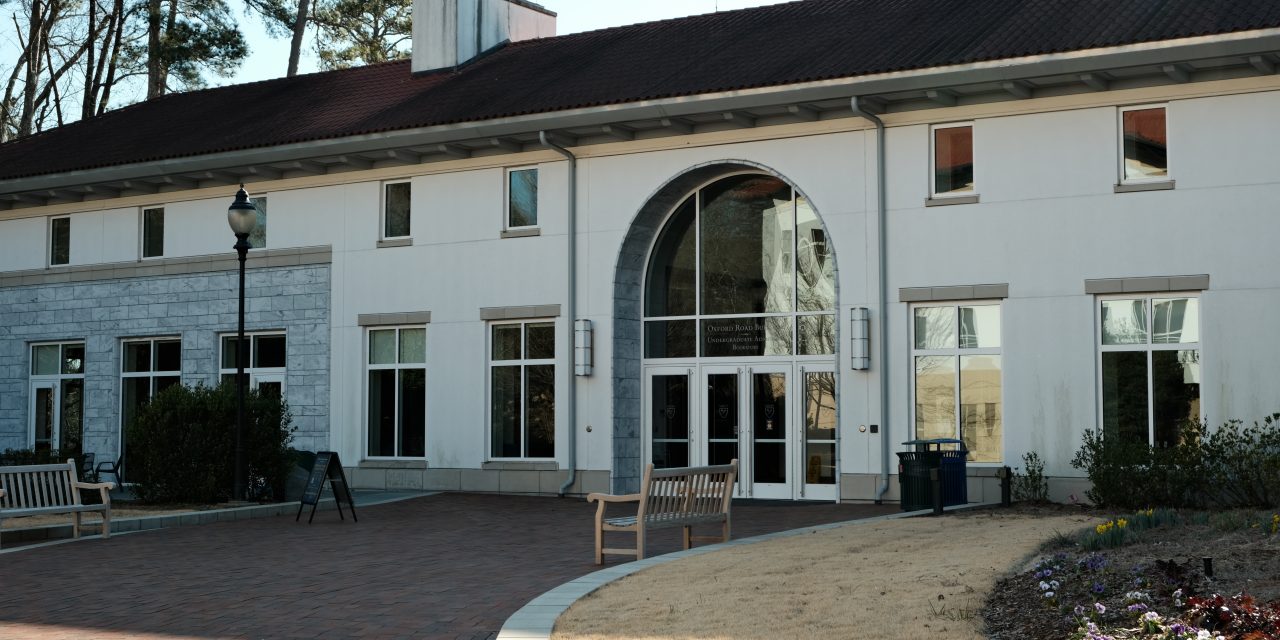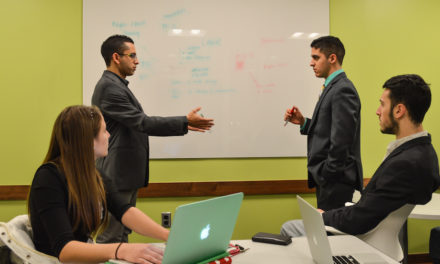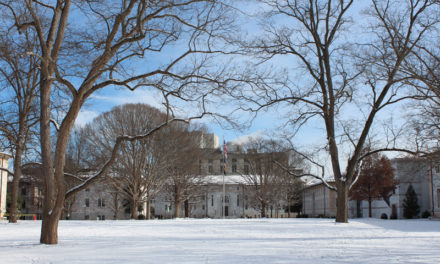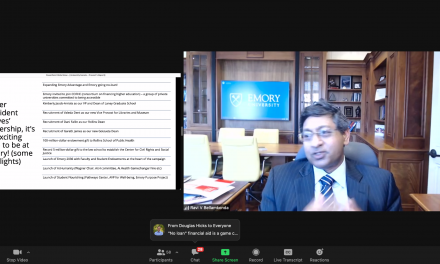College undergraduate and graduate enrollment rates dropped 1.1% in the United States between fall 2021 and fall 2022. Although the decline was smaller than numbers during the COVID-19 pandemic, this follows a trend that began in fall 2020 of over a million less students enrolling in U.S. colleges each year.
While private non-profit universities — which includes Emory University — only faced a 0.9% decrease in enrollment, Associate Vice Provost and Dean of Admission John Latting wrote in an email to the Wheel that Emory did not experience a decline in enrollment. According to data collected by the Office of Planning and Administration, 15,846 students enrolled in the University in fall 2021, while 15,909 enrolled in fall 2022 — an increase of about 0.4%.
Test-optional policies have helped Emory and other prestigious universities not experience the same decline in enrollment that have been affecting many smaller, less selective schools and community colleges, according to Assistant Vice Provost and Dean of Oxford Enrollment Kelley Lips.
“Emory has continued to have strong enrollment and attract many talented and diverse students,” Lips wrote in an email to the Wheel. “There have not been any declines of significance that are of concern at this time.”
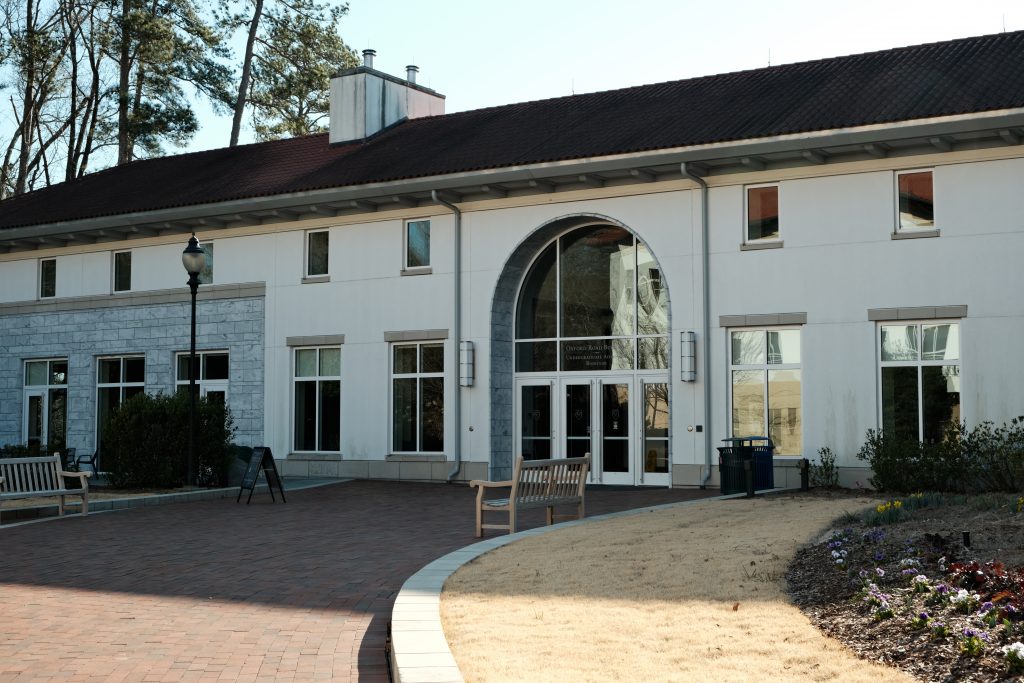
Emory University’s Admissions Building sits on the edge of campus. (Lin Yu/Staff Photographer)
Latting explained in an email to the Wheel that plentiful job opportunities and financial hardships emphasized by the COVID-19 pandemic are likely responsible for the decrease in higher education enrollment.
“This time around there is the added factor of COVID, which disrupted educational progress for many students, leaving them feeling off track and open to other directions,” Latting wrote. “Despite the strong hiring market, many families are experiencing economic distress, another reason for students to shift focus onto near-term financial concerns over long-term investments in education.”
According to Lips, a dramatic decline in the number of high school graduates is expected in 2025, in addition to the trend of decreasing college enrollment.
Makeida Pickens (21Ox, 23C) said she believes remote learning veered students away from college as tuition continued to increase without offering the normal college experience, prompting high school students to seek alternative paths to higher education.
“Colleges are continuously increasing their tuition to the point of being nearly unaffordable, and that leads to people taking out loans and possibly having to pay them off for the rest of their life,” Pickens said. “That fear of a possible lifetime of having student loan debts from just a bachelor’s degree is a very valid concern.”
Over 42% of 18-to-29-year-olds reported having or living with someone who has student loan debt, while 70% reported that finances played a major role in deciding whether or not to pursue college.
There was a major shift in students’ perspectives about the necessity of college during the pandemic, Lips noted. Work shortages created an increased demand for labor, which caused many students to stray from the path to college.
Lips added that the pandemic has highlighted gaps in the supply chain, most notably the worker shortage. As a result, several companies have offered incentives such as introducing a hybrid work model and increasing salaries to attract employees.
The combination of high tuition and the feeling that colleges do not truly care about maximizing student success could make alternative paths more appealing, Julia Burca (26C) said. Trade schools, or postsecondary educational institutions that train students in a skilled trade, are an attractive option for some high school students because the tuition is significantly less costly and requires less time than a traditional four-year university degree. In contrast to 4-year universities that, on average, cost $37,600, trade schools typically cost between $3,600 to $14,500 per year.
However, many students still choose to attend college due to the belief that they will have better job opportunities. A 2021 study revealed that 59% of high school students believed it was necessary to have a bachelor’s degree to obtain a good job.
“It’s definitely not the only way to go, but it’s the safest way,” Burca said. “While most college graduates’ jobs have a set cap on salary, there is also a minimum, whereas some jobs like trade schools or working with social media platforms have no cap on salary but also no minimum salary, so the stakes are much higher.”
While many students traditionally faced pressure from their teachers and parents to attend college, some are realizing that they could also find personal and financial success without a bachelor’s degree, Pickens said.
While just under 16% of high school graduates pursue trade or vocational schools after graduating, over 40% of students considered studying a trade. High school graduates are seeking out careers as electricians, plumbers and radiation therapists and still earning average annual salaries as high as $94,300.
“With a university degree, it is almost a gamble, especially when jobs for an entry level position want master degrees and five years of experience from a 22- or 23-year-old,” Pickens said. “In reality, [trade school] is better financially and saves a lot of time.”
Colleges need to address their high tuition price by providing strong need-based financial aid to retain enrollment, Latting said. He added that Emory hopes to expand resources that ensure more students graduate debt free, such as the Emory Advantage program. Starting this academic year, Emory replaced students’ need-based loans with institutional grants and scholarships.
Another major component to increasing college enrollment is adding part-time degree programs for students who work or have additional commitments, Latting noted. Colleges are experiencing a growing demand for online-based courses, as primarily online institutions’ undergraduate enrollment grew 3.2% over last fall.
Despite Emory expanding its financial aid programs, some students believe that the University could provide more financial assistance and greater support from the Emory administration to work toward their academic aspirations.
“Stop making tuition unaffordable,” Pickens said. “Provide more financial assistance to low-income students. … Offer more resources for students’ mental health and stress.”
By increasing communication and transparency, Burca said students would not only have the support to achieve their goals, but also see a positive return on their educational investment.
“Work with students to ensure their success, be more flexible with academic accommodations, hire good professors and just overall help students achieve their goals,” Burca said.
Science & Research Desk | Julia Laszcz (she/her 24C) is from Bergen County, New Jersey, majoring in neuroscience and behavioral biology and English. Outside of the Wheel, Laszcz is a writer for Grey Matters. Laszcz also is a volunteer for her town’s ambulance corp. She likes to cook new recipes and play with her dog.

